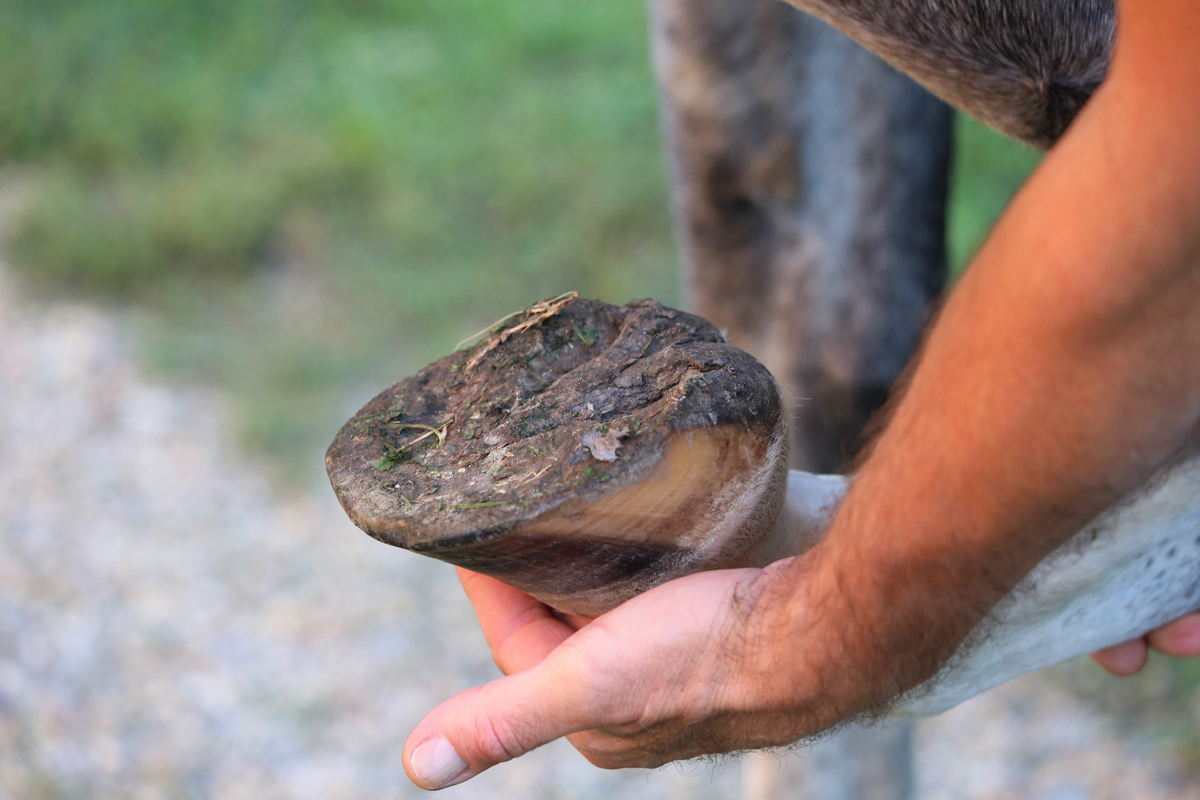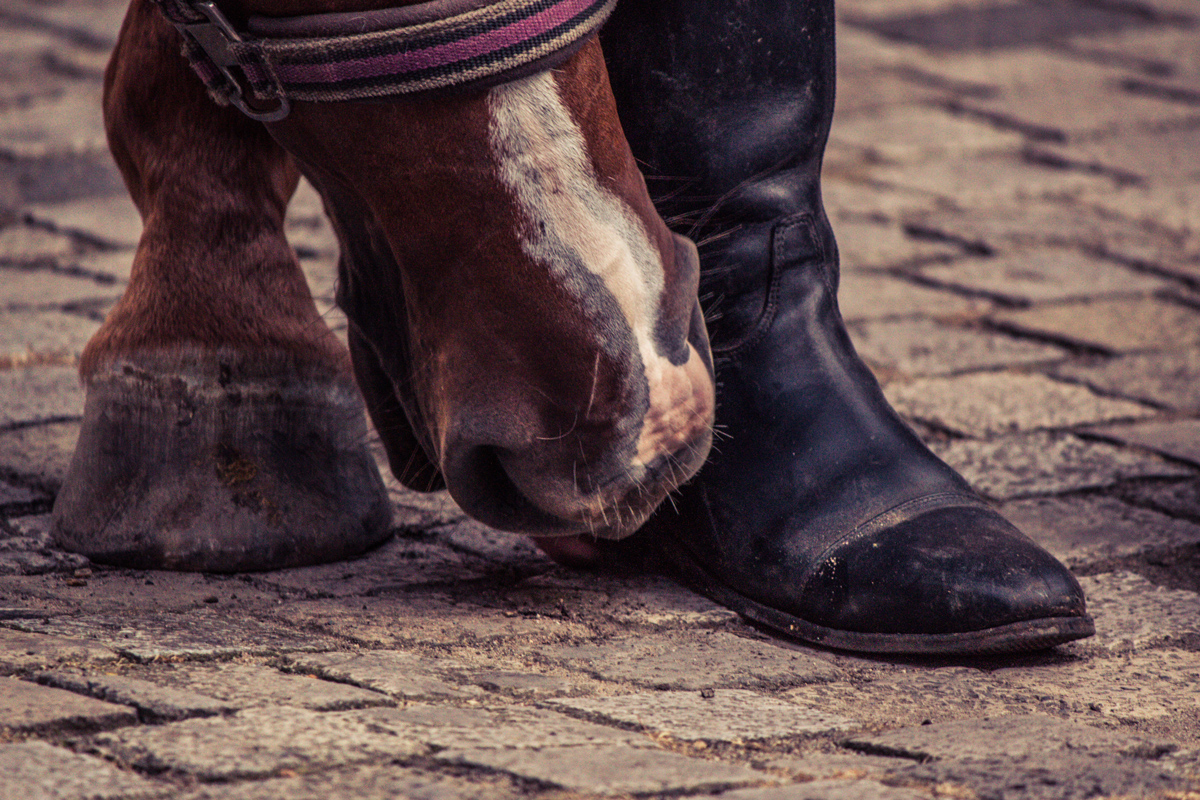It’s a scenario that’s all too easy to imagine. You notice your horse limping, go to take a look and see a nail sticking out of their hoof. What a nightmare!
However, it’s important to stay calm as what you do next could save your beloved equine’s life! The horse’s hoof is an incredibly sensitive structure, so a nail in it can be potentially life threatening.
Read our step-by-step guide on how to deal with a nail in your horse’s hoof, and be ready to deal with this situation.
Being prepared for any eventuality is part and parcel of responsible horse ownership. That’s why Equesure has crafted a range of insurance solutions for you and your equine friend. From insurance for a horse rider to horse insurance, we’ve got you covered.
The structure of the hoof
The hoof capsule contains incredibly complex and sensitive structures vital to the life of a horse. The main parts potentially affected by a penetration of the hoof capsule include the coffin joint and bone, the navicular bone and bursae, the laminae and the deep digital flexor tendon.
A nail penetrating any of these structures is a serious injury. A combination of bacterial infection and inflammation can soon develop and cause such extensive damage that the horse could suffer chronic lameness and may even be put down.
Emergency surgery and treatment is often the only way to treat infection of these structures. Any delay could be catastrophic.

How to deal with a nail in your horse’s hoof
Clearly the size and position of the penetrating nail will have a big effect on whether the vital structures are affected.
There really is no one-size-fits-all answer. But no matter what the situation is, it’s important to know what to do. Follow these steps to give your horse the best possible chance of recovering.
Step 1 Do not pull it out!
Your natural instinct will probably be to pull out the nail. However, unless you know it has only gone in a very short distance then it’s almost always better to leave it in. Once you remove it, it’s almost impossible to see exactly where it went in and at what angle. This makes it much harder for your vet to assess how much damage has been caused inside.
Step 2 Keep the horse calm
If the nail is sticking out and could be forced in further, the best thing to do is to keep the horse calm and to try to prevent them standing or walking on the injured foot. This may not always be possible but try to pad the foot around the nail and leave it in place.
Step 3 Take a picture
Your vet will want to know as much about the injury as possible. So, pay very close attention to where exactly the nail went in, the angle it went in at, and how far the nail penetrated the foot. If possible, take a photo or video of the injury on your mobile phone.
Step 4 Call for help
Call out your vet and tell them your horse has a nail in the hoof. Send them the picture and as much information as possible.
They might be able to tell you to remove the nail or not before they arrive. If the nail has penetrated deeply then your vet might bring a mobile X-ray machine to assess the injury.
Usually only an X-ray can show the true damage a nail has done. It will enable the vet to see precisely where within the foot the nail has gone and provide the best treatment.
Step 5 Keep the area clean and protected
If you’ve had to remove the nail before the vet has arrived then it’s important to keep the area clean and protected to reduce the chance of infection. If possible, apply a clean dry dressing and/or poultice to the hoof. A good idea is to video the removal so your vet can more accurately diagnose the extent of any damage.

Step 6 Keep the nail
Don’t just throw the nail away once it’s been removed. Your vet will need to see it and how far it penetrated.
Step 7 Check your insurance
Treatment will obviously depend on the seriousness of the injury. Penetration by a nail carries a high risk of tetanus so a tetanus injection might be given along with antibiotics to fight any infection.
If deeper structures could have been damaged then surgery, anaesthesia or prolonged antibiotics might be involved.
Veterinary treatment can soon become expensive. That’s why having horse insurance to complement your horse rider insurance is so important.
5 common hoof problems to keep an eye out for
Monitoring your horse’s hooves daily is a good way to spot health issues before they take hold.
Any problems that affect a horse’s balance could mean big trouble for you, and see you claiming on your horse rider insurance for any accidents or injury.
Here are five common hoof problems to look out for:
- Bruising – Caused by direct trauma. It’s easier to spot on horses with white hooves than black.
- Thrush – A nasty bacterial infection. Look out for a black, foul-smelling discharge.
- Sheared heels – A very painful structural breakdown that causes deep cracks in the central groove of the frog.
- Seedy toe – A combination of bacterial and fungal infection, if your horse has seedy toe you’ll notice the hoof wall peeling away.
- Cracks – Splits or cracks can often appear; a vet should be able to confirm whether it’s something more serious.
Protecting yourself and your horse
Equesure not only protects horses but also their riders from the financial fallout of accidents or injury. From novices to the more experienced, horse rider insurance arranged through Equesure is the way to protect yourself and your equine.
With over 60 years of experience in the insurance market, our specialist team can offer you a bespoke policy suited to rider’s needs.
Policies from our varied and trusted panel of insurers can include:
- Personal accident cover up to £20,000
- Public liability up to £1 million
- Personal dental treatment cover up to £1,750
- Saddlery and tack cover
- Emergency vet fees up to the value of £1,500
Get a quote for horse rider insurance today.
Policy benefits and features offered may very between insurance schemes or cover selected and are subject to underwriting criteria. Information contained within this article is accurate at the time of publishing but may be subject to change.





